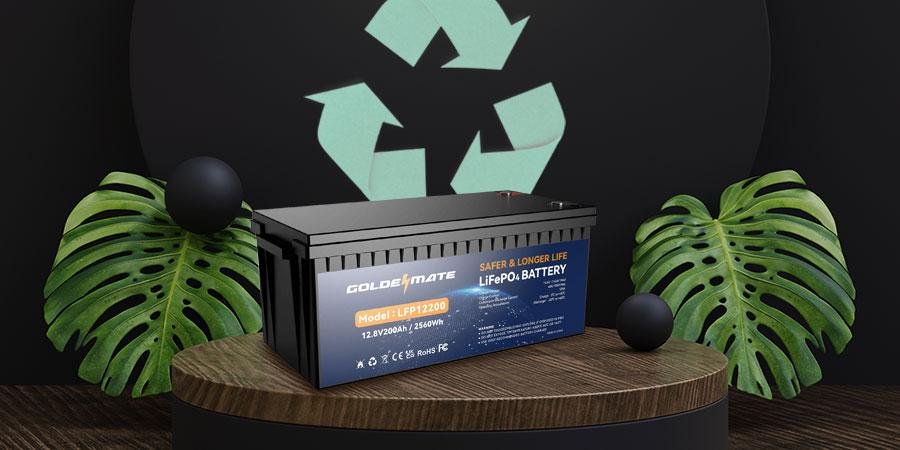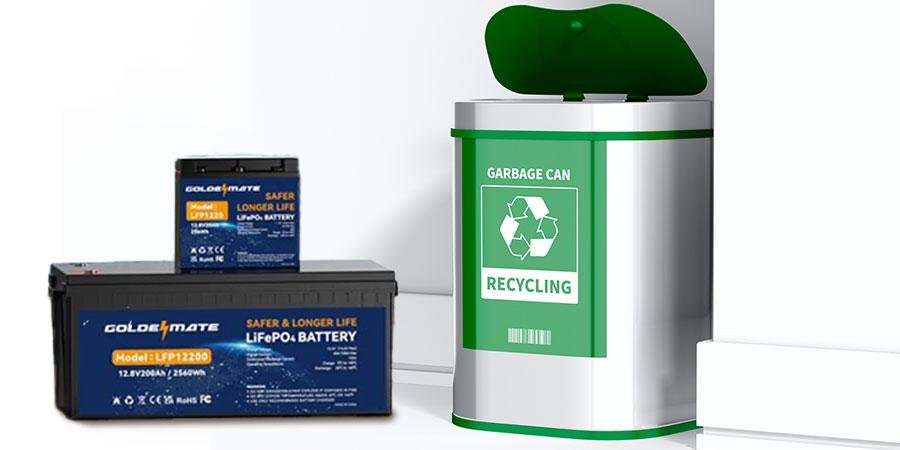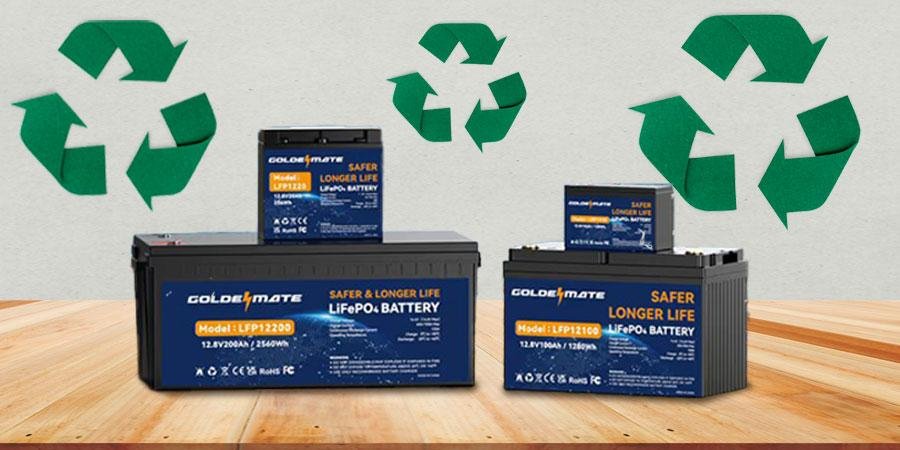The world is witnessing a transformative shift toward battery-powered mobility. Electric vehicles (EVs), e-bikes, electric scooters, and other forms of battery-driven transportation have become increasingly prevalent in our daily lives. While this shift has the potential to reduce carbon emissions and decrease our dependence on fossil fuels, it also presents a pressing environmental challenge: what should we do with old mobility batteries?
Table of Contents
The Rise of Mobility Batteries
The transition to battery-powered mobility has gained momentum in recent years, driven by concerns about climate change and the need to reduce greenhouse gas emissions. Lithium-ion batteries, in particular, have become the standard in many mobility applications due to their high energy density and long cycle life. However, the widespread adoption of these batteries raises questions about their end-of-life management.
The Environmental Impact of Old Mobility Batteries
As batteries age and reach the end of their usable life, they become a potential environmental hazard. Mobility batteries, like most batteries, contain toxic materials such as lithium, cobalt, and nickel. When disposed of improperly, these materials can contaminate the environment and pose significant risks to human health.
One of the primary concerns is the disposal of old mobility batteries in landfills. When batteries end up in landfills, they can leach harmful chemicals into the soil and groundwater. This contamination can persist for decades, affecting ecosystems and potentially entering the food chain, with serious consequences for wildlife and human health.
Furthermore, incinerating batteries as a means of disposal can release toxic pollutants into the air, including heavy metals and volatile organic compounds. These pollutants contribute to air pollution, which can lead to respiratory problems and other health issues for nearby communities.
The Importance of Battery Recycling
To address the environmental challenges associated with old mobility batteries, recycling becomes imperative. Battery recycling is a process that involves collecting and reusing valuable materials from spent batteries while safely disposing of hazardous components. Recycling not only reduces the environmental footprint of battery disposal but also conserves valuable resources.
The recycling process typically involves the following steps:
- Collection: Used batteries are collected from various sources, including consumers, manufacturers, and recycling centers.
- Sorting: Batteries are sorted based on their chemistry, size, and type, as different battery chemistries have unique recycling processes.
- Shredding: Batteries are shredded into small pieces to facilitate the separation of different materials.
- Hydrometallurgical Process: This step involves extracting valuable materials, such as lithium, cobalt, and nickel, through chemical processes.
- Refining and Purification: The extracted materials are refined and purified to meet industry standards for reuse.
- Reuse: Recovered materials can be used to manufacture new batteries or other products, closing the loop in the battery lifecycle.
Recycling batteries not only conserves natural resources but also reduces the energy and environmental costs associated with mining and processing raw materials. Moreover, it helps prevent the release of hazardous chemicals into the environment, protecting ecosystems and human health.
Regulations and Initiatives
To promote responsible battery recycling and manage the environmental impact of old mobility batteries, governments around the world have implemented regulations and standards. These regulations often require manufacturers to establish collection and recycling programs for their products, known as Extended Producer Responsibility (EPR) programs.
In the European Union, for example, the Battery Directive sets stringent requirements for the collection and recycling of batteries, aiming to reduce the environmental impact of battery waste. The United States has federal regulations, such as the Battery Act, which addresses the safe disposal of certain types of batteries, and several states have their own battery recycling laws.
In addition to government-led initiatives, the private sector plays a significant role in driving responsible battery management. Many battery manufacturers and EV producers have established their own recycling programs to ensure that their products are disposed of and recycled properly. These initiatives help build public trust and ensure that the environmental costs of mobility batteries are minimized. Explore the latest innovations in mobility scooter batteries.
Challenges and Obstacles

While the concept of battery recycling is crucial for environmental sustainability, several challenges and obstacles exist that must be addressed for the system to work effectively.
- Collection and Transportation: Collecting old batteries from various sources can be logistically challenging, and transportation to recycling facilities adds another layer of complexity. A well-structured collection and transportation system is essential to ensure that old batteries reach recycling centers.
- Recycling Technology and Efficiency: Battery recycling technologies are continually evolving, and improvements are needed to increase the efficiency and effectiveness of the process. Advancements in recycling methods are essential to recover a higher percentage of valuable materials and reduce waste.
- Consumer Awareness and Participation: Many consumers are unaware of the importance of recycling old batteries or may not know how to dispose of them correctly. Educating the public about battery recycling and providing convenient collection points is essential to encourage participation.
The Role of Manufacturers and Consumers

Battery recycling is a shared responsibility between manufacturers, consumers, and government authorities. Each stakeholder plays a critical role in ensuring the success of battery recycling programs and reducing the environmental impact of old mobility batteries.
- The Responsibility of Mobility Battery Manufacturers: Manufacturers should design products with recycling in mind. This includes using standardized components and materials that are easy to disassemble and recycle. Establishing collection and recycling programs and promoting responsible disposal among consumers are also key responsibilities.
- Educating Consumers on Responsible Battery Disposal: Consumers must be aware of the importance of recycling old mobility batteries and how to do so correctly. Manufacturers can help by providing information and resources on responsible battery disposal.
- Extended Producer Responsibility (EPR) Programs: EPR programs, which place the onus on manufacturers to manage the end-of-life disposal of their products, have been successful in many regions. These programs create a financial incentive for manufacturers to invest in recycling and proper disposal.
Future Trends in Battery Recycling
As technology advances and awareness of the environmental impact of old mobility batteries grows, several promising trends are emerging in the field of battery recycling.
- Advances in Recycling Technology: Innovations in recycling technology, including more efficient and environmentally friendly processes, are continually evolving. These advancements will increase the recovery rate of valuable materials from old batteries.
- Circular Economy Models for Batteries: A circular economy approach focuses on reusing and recycling materials to minimize waste and reduce environmental impact. This concept is gaining traction in the battery industry, leading to increased recycling and a reduced demand for raw materials.
- Second-Life Applications: Old mobility batteries that no longer meet the demands of transportation can find new life in other applications. They can be repurposed for energy storage in stationary applications, providing a valuable second use for these batteries.
Case Studies
Several regions and countries have already made significant progress in responsible battery recycling and management. These case studies provide examples of successful programs and initiatives that can serve as models for other areas.
- The European Union: The EU has implemented strict regulations for battery recycling, resulting in a robust recycling infrastructure and high recycling rates.
- Japan: Japan has implemented advanced recycling methods, achieving impressive recovery rates of valuable materials from old batteries.
- United States: Various states in the U.S., such as California, have their own battery recycling programs that complement federal regulations. These programs have led to improved recycling rates.
Conclusion
The transition to battery-powered mobility is a critical step toward a more sustainable and environmentally friendly future. However, this transformation brings with it the challenge of dealing with old mobility batteries. The improper disposal of these batteries can have detrimental environmental and health consequences. To mitigate these risks, battery recycling has emerged as a vital solution.
Responsible battery recycling is a shared responsibility among manufacturers, consumers, and government authorities. By implementing effective recycling programs, educating the public, and advancing recycling technology, we can significantly reduce the environmental impact of old mobility batteries.
As technology continues to evolve and circular economy principles gain traction, the future of battery recycling looks promising. With the right policies and practices in place, we can ensure that the environmental footprint of battery-powered mobility remains minimal, contributing to a cleaner and more sustainable world.










